Pelješac Croatia – Places to visit on Pelješac
Published: June 9th, 2019
Author: Mate I
Pelješac Peninsula is situated on the eastern Adriatic coast is part of South Dalmatia region.
The stunning peninsula is composed of four municipalities: Orebic, Trpanj, Janjina, and Ston.
Many visitors go to Pelješac for its gorgeous views and historical sites.
It is also known for its great wines and the best oysters and mussels in Croatia.
Oysters are usually eaten raw with just a hint of lemon. This well-known peninsula in Croatia is an ideal place for a relaxing holiday.
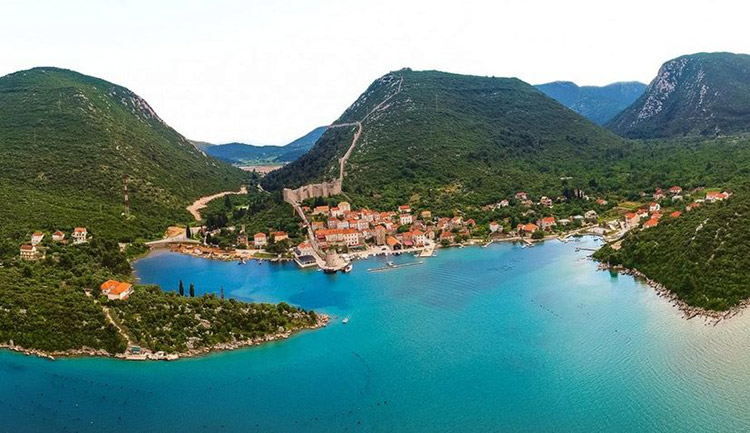
Page Content:
Location of Pelješac
The Pelješac Peninsula is located in southern Dalmatia, a historical region of Croatia by the Adriatic Sea. Found in the southern part of the country, it is part of the Dubrovnik-Neretva County.
This peninsula stretches 40 miles long, the second largest in Croatia.
It stretches from the city of Ston to the Cape Lovište. The peninsula is separated from the Croatian mainland by the Bay of Mali Ston.
The Pelješac channel divides it from Korcula Island.
Pelješac principally features karst topography. The vegetation is composed mainly of groves of pine and cypress.
The quaint hamlets and villages are dotted across the foothills of the Dolomites, evoking an ancient past.

The village gardens and fields are filled with lemon, fig, and almond trees. The peninsula only has a small population, relying on tourism, wineries, and fishing, and agriculture as its main livelihood.
Interesting facts about Pelješac
Throughout its long and interesting history, Pelješac had many names.
It has been called Puncta Stagni, Stonski Rat, Sabbioncello, and Ponta di Stagno.
Following the Illyrian Wars in 219 BC, the region became part of the Roman Empire, resulting in Roman migration.
The area was also ruled by the Byzantine Empire in the 6th century.
The Serbs ruled the region thereafter. In 1333, the King of Serbia Stefan Decanski sold Ston and Pelješac to the aristocratic maritime Republic of Ragusa.
The Republic of Ragusa set up massive fortifications called Walls of Ston.
This 5.5-mile defensive wall is the second largest in Europe.

The old republic was abolished in 1806 when the French occupied the region.
During the Napoleonic Wars, the peninsula served as an all-important link between the Balkan hinterland and Korčula and Hvar island.
From 1815 to 1867, Pelješac was part of the Austria-Hungary Empire.
After the First World War in 1918, it was under the Socialistic Federal Republic of Yugoslavia until 1991.
Places to visit on Pelješac
There are many things to do in Pelješac if you’re on holiday.
However, just going on a scenic drive and enjoying its magnificent views is enough for visitors to appreciate this peninsula.
Pelješac abounds in natural beauty, sandy and pebbled beaches, great red wine, and delicious seafood.
Compared to other touristy coastal towns, it remains peaceful and quiet, its small-town quaintness still apparent.
If you’re looking for branded hotels, a party atmosphere, and huge resorts, then this place is not for you.
But if you’re looking to get away from the hustle and bustle of everyday life and big crowds, then this is the perfect vacation spot.
Best Beaches on Pelješac
If you want to go to a gorgeous beach, you will be spoilt for choice in Pelješac. It is best-known for its pebbly beaches.
Prapatno beach
Lovely Prapatno beach is about 3.5 kilometers away from Ston. Although it is a small beach of only about 250 meters long, the clear turquoise waters are very shallow, ideal for families with small kids.

Trstenik – sandy beach on Pelješac
The long sandy beach at Trstenik is located right in the middle of the village.

Since the beach is long and wide, many visiting families and even local families spend the summer holidays here.
Divna Beach
On the northern coast of Pelješac, there is a great pebbly beach called Divna Beach.
Facing the mainland, this hidden place is an ideal spot to spend an entire summer day.

Divna Beach, which means ‘gorgeous’, tends to be populated with fewer tourists. The waters are also more pristine and the village’s fishing community goes about its daily business, not minding the tourists.
Viganj Beach on Pelješac
If you are a water sports fan, then you should head to Viganj Beach, a haven for windsurfing and sailing.
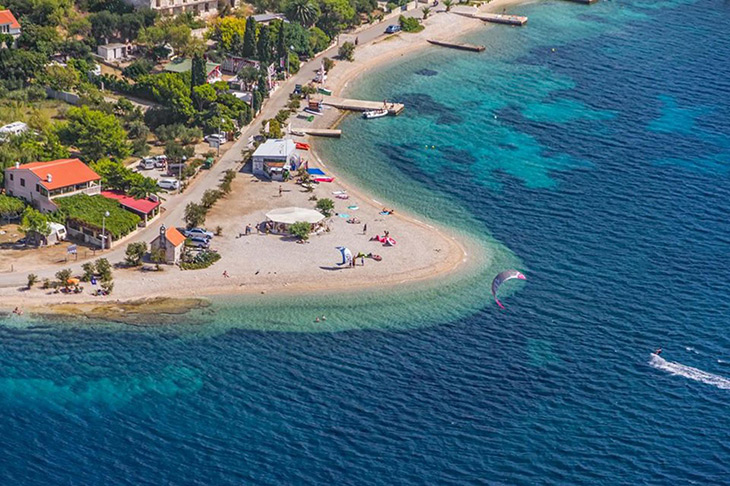
The mistral blows twice as hard in Viganj because it is located halfway along the narrow Korčula channel.
There are many established windsurfing clubs and schools in the village.
Go on a Wine Tour
Pelješac is home to superior wineries. The best-known wine in the area is Dingac, a red wine produced on the slopes of Orebić, Postup, and Dingač.
In Trstenik, internationally-acclaimed winemaker Miljenko ‘Mike’ Grgich produces Plavac Mali, a great-tasting red wine aged over 15 months in special oak barrels.
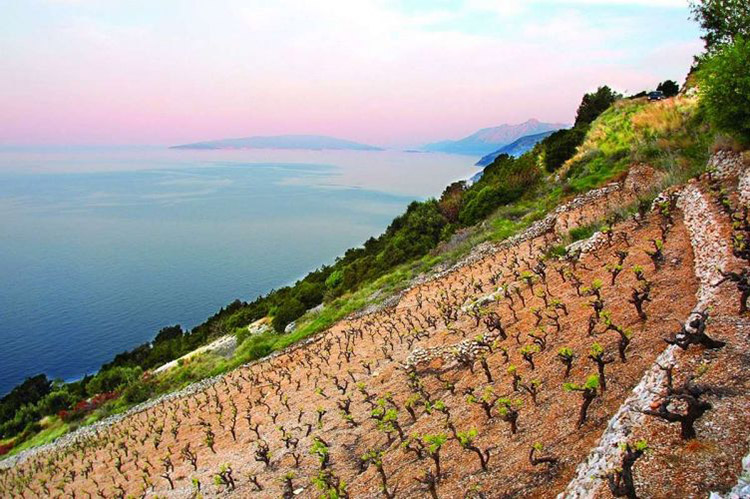
About 15 years ago, the village of Ponikve was placed on the wine map by poet Frano Milos.
Produced from a variety of Plavac Mali, Stagnum has a deep, full-bodied, and sensual flavor. The Miloš winery can be reached by visitors through the main Pelješac road.
Try the award-winning Miloš Stagnum and the Mali Stagnum which is made from dried berries.
Another vineyard worth visiting is that of Miho Rozic, who is best known for his Plavac Mali and the dessert wine Plavac Elihu.
Okorusno, one of the most significant wine-growing areas, is about 1.5 hours away from Dubrovnik.
The small village has about 150 local residents, and they are all involved in local wine production. Visitors can go to Sundrica, a wine cellar where they can do some wine tasting.
Visit saltworks of Ston
In the town of Ston, salt pans date back to the 14th century, some of the oldest in Europe.
Today, the privately-owned salt pans still produce about 530 tons of salt.

They still employ traditional methods in producing and harvesting the salt, a method that has been passed on for 4,000 years. However, out of the number of salt produced every year, only a small amount is edible.
There are currently nine basins used for the crystallization process, all named after saints except for one.
The salt basins need a massive renovation in order for the salt to be used as food.
Most of the salt harvested in Ston is used for melting the ice on the roads.
Since the method has remained unchanged through the years and it is done in such an environmentally-friendly way, the quality of the salt is very excellent.
Each summer, volunteers can actually sign up for camp to find out how the entire salt-making process works.
It is back-breaking work, the day starting at 6 AM.
Try the local cuisine
The Pelješac Peninsula is well-known for its mouth-wateringly delightful seafood. They are famed for their oysters and other shellfish.
In Mali Ston, visitors shouldn’t miss Kapetanova Kuca, a restaurant that overlooks the narrow sea channel and the historic walls of Ston.
The restaurant has been around since 1986 and is well-known for its oysters, shellfish, and homemade pasta dishes paired with the beautiful wine from the area.
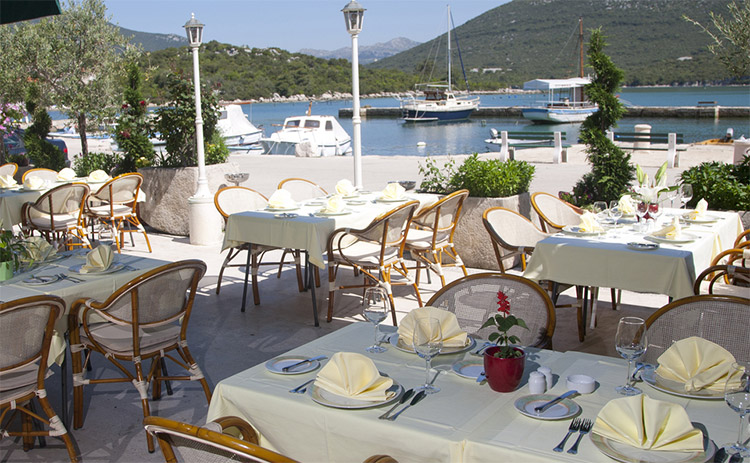
In Ston, the less touristy Ficovic in Hodilje offers excellent fare.
Ston is also where Bella Vista restaurant is located, with its terrace jutting out over Prapratno bay.
They serve the most amazing mussels, scampi, fish, and other bounties of the sea accompanied by the best wines of the region.
In the tiny fishing village of Kobas, restaurant Gastro Mare offers delightful seafood fresh from the Adriatic with veggies and herbs grown in their own garden.
Expolore Pelješac peninsula
Pelješac is the perfect place to go on a scenic drive. The views are absolutely breathtaking and you will definitely enjoy the scenery.
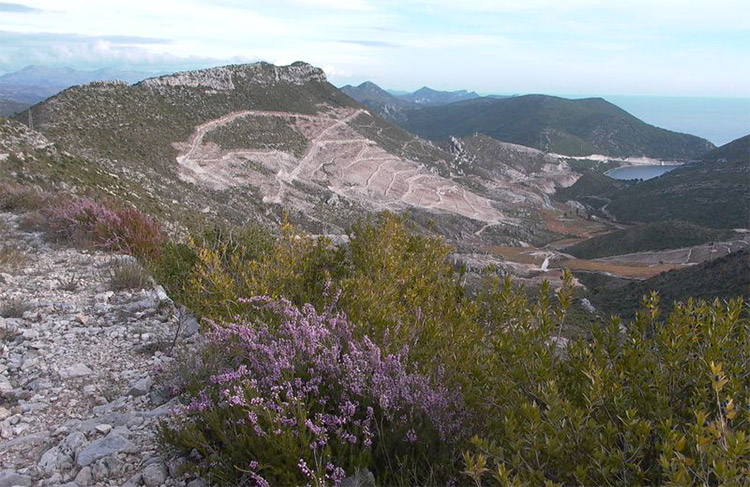
You can go from Trstenik to Žuljana on a recently-asphalted road with magnificent views.
You can also drive from Trstenik to Potomje across the wine-growing slopes of the Dingač region.
Go scuba diving
Scuba diving is another popular activity on the Pelješac peninsula.
There are several shipwrecks along the coast, including a German torpedo boat that sunk near a Lirica lighthouse in 1944.
When you dive into the clear waters just off Žuljana, you will discover a well-preserved 2,000-year old Roman ship with its hull buried in the sand only some 45 meters below.
There are also a lot of underwater caves and passages. There are several diving centers in Zuljana and Orebic.
Places to visit in Pelješac
Walls of Ston
This fortification that was built in the 14th century was originally built to protect the salt pans of the town. The walls join two fortified medieval towns – Ston and Mali Ston.
This was the time when salt was so valuable that many people desire to get their hand on it.
It’s been said that back then, the value of salt was equal to that of gold.
The reason why it was built is in itself very interesting, but the actual edifice itself is something to behold. In later years the walls and forts were extended many times. It consists of forty-one towers, three forts, four pre-walls, seven bastions, and one water-filled moat.

It is as magnificent as it sounds. There are certain portions of the wall that have been renovated by an association dubbed as the Society of Friends of Dubrovnik Antiques. Now only 20 of the 41 towers remain. Almost the entire length of the wall is accessible to the public, open to visitors the whole year.
Visitors can walk on the 5.5-kilometer stretch, which lasts about 40 minutes long. In winter from November to March, it is open from 9:00 AM to 3:00 PM, and in the summer from April to October it is open daily from 8:30 AM to 6:30 PM.
Adults can get into the wall for a 40 kn admission fee, and children up to 18 years of age will have to pay 20 kn each.
Ston and Mali Ston
The towns of Ston and Mali Ston on the Pelješac Peninsula are worth visiting.
Although not many tourists travel this route because it has no luxury resorts, visitors love its wonderful scenery, old stone houses, and the longest fortification that connects the two towns.
Only 59 kilometers northwest of Dubrovnik, the area is best known for its salt production. This is the region’s major industry since the Middle Ages and has the oldest and best-preserved saltworks in Europe.
In this area, they still follow the age-old tradition of harvesting salt by hand.

Ston is slightly bigger than its neighboring town Mali Ston.
Ston has had inhabitants since prehistoric times, and the town features nicely-preserved medieval architecture.
The Big Citadel, known locally as Veliki Kastio, is a big quadrangular fortress on the southeastern area of the town. Every September, the Ston Wall Marathon is held, attracting runners from around the world.
Mali Ston, which was founded in 1335, was essentially built to be a fortress town. Thus, its most impressive feature is the fortress of Koruna, seen rising above the village from a considerable distance.
Nakovana
This abandoned settlement features a maze of intact stone houses.
What happened here is still largely unknown, but archaeological digs have been taking place in the area, and those who are intrigued by this ghost town can take a day to explore it.
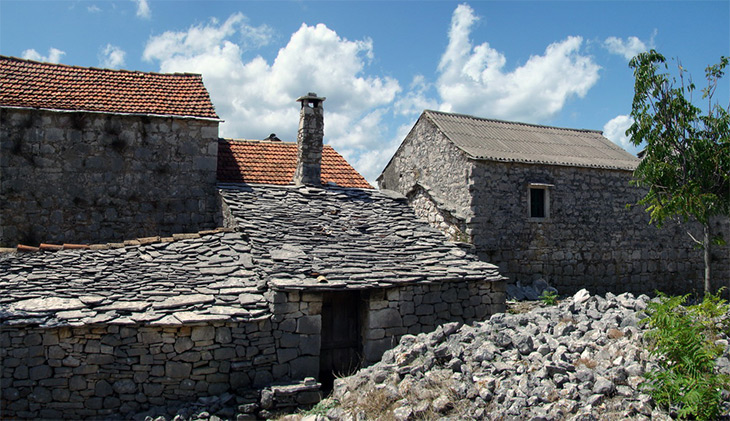
The village is also famously known for the Neolithic Nakovana Cave, site of an ancient fertility cult.
Visit Trstenik
This village was an important harbor in the 19th century for transporting grapes from Pelješac to southern Italy. Trstenik is located on the southern coast of the peninsula is connected to the mainland by a coastal road via Ston.
Located on a bay under the hills, it features a beautiful large pebble beach at its base.

Considered as one of the most gorgeous locations on the Croatian coast, Trstenik is unspoilt, with its crystal clear waters and small bays and beaches.
There is a sandy beach in the village, ideal for families with small children. Since it is situated in a deep bay, it has clean, warm waters and features wonderful views over the channel.
Kuna Pelješka
This small village lies on the interior of the peninsula, surrounded by high hills. It is also known for its wine production and other agricultural products.

You shouldn’t miss this village on your visit to the Pelješac Peninsula as it has an 18th-century Franciscan monastery that houses amazing painting and artworks by Mato Celestin Medovic, a famous Croatian artist who lived in the monastery as a Franciscan monk.
There is also a 17th-century church called Church of Our Lady of Loreta – Delorite.
It is a large church with three naves.
The most impressive thing about this church is its awe-inspiring interior with marble altars and artworks. There is also a neo-Renaissance bell tower on the church grounds.
Sveti Ilija
The highest spot on the Pelješac peninsula, Sveti Ilija (St. Elijah) is a rocky mountain with stunning, panoramic views at its peak.
Located northwest of Orebic, there are several marked trails for hikers that want to scale its peak, rising high at 961 meters.

There are three popular starting points: Nakovane, Ruskovica, and Bilopolja. Nakovane is the easiest trail, while Bilopolja is the most challenging.
Another easy hike which entails mostly flat terrain goes from Oskorusno to Kuna. It takes about an hour and a half to complete this hike which takes visitors to vineyards and a church.
Orebić on Pelješac Peninsula
Home to Trstenica beach, arguably the most famous beach in Pelješac, Orebic is a great day trip destination if you are coming from Korčula.
The town is also an interesting place for people who are love history and culture.
The Romans left traces of inscriptions, tombs, traces of a villa and ceramics.

Orebić was an important maritime center during the 17th century, so the surrounding villages have notable old houses built by sea captains.
There is also a Maritime Museum filled with naval artifacts.
The Maritime Museum has well-documented nautical memorabilia, including atlases, sextants, and models of 19th-century merchant ships.
About 2 kilometers west of Orebic, visitors can take a side route to a Gothic-Renaissance Franciscan Monastery.
It contains a 15th-century loggia and a cloister. Over the hill, requiring a short climb from the monastery grounds is the Church of Our Lady of Carmen.
This stunning hilltop church has a fantastic view of Korcula and its surrounding islands.
Getting to Pelješac Croatia
Pelješac is about an hour’s drive from Dubrovnik.
Its little towns are accessible by car.
You can also get there by local buses.
There are buses that go from Orebić to Dubrovnik and vice versa, with daily departures at 7:20 AM.
If you want to go around Pelješac, there are daily bus departures from Orebić to Leviste and Orebić to Trpanj.
There are also ferries that ply the Korcula-Orebic route as well as routes that go around Viganj, Kuciste, and Korčula.
Pelješac is an ideal day trip from Dubrovnik.
The nearest airport is in Dubrovnik, which is about an hour’s drive from Ston.
There is also a regular shuttle bus service from the Dubrovnik airport to Pelješac.
If you are coming from Korcula town, you can ride the Krio catamaran.
If you are coming from Split, which is in the north, you can take a ferry from Ploce to Trpanj.
By the end of 2019 there should be Peljesac bridge finished which will connect Komarno village on mainland side and Peljesac peninsula.

According to the plans, the Pelješac Bridge will be a 2,404-metre long and it will be biggest one in Croatia.
So it will make Pelješac more accessible if you are driving from Split.
